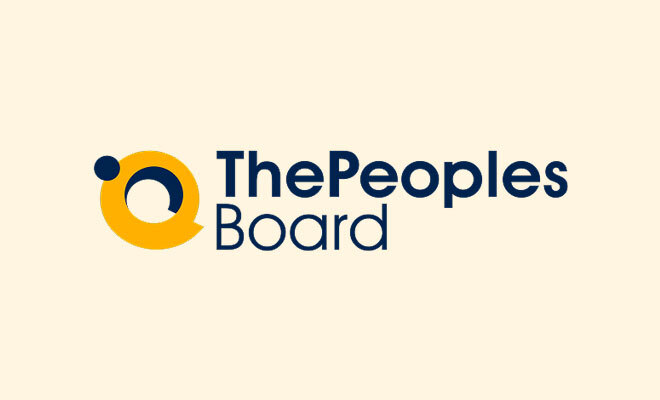Change is essential for long-term success, whether it’s adopting new technologies, restructuring teams, or pivoting strategies to adapt to market demands. It also provides the employees with the chance to expand their skills and be on top of the latest trends.
For senior HR leaders, driving organizational change involves managing the complexities of diverse workforces, complying with labor laws, and ensuring employee engagement through transitions.
As such, creating effective strategy to drive organization change is a delicate matter that needs to be handled carefully and efficiently. With a though understanding of the process and familiarity with necessary steps, you can be the force behind the positive change in your company.
Why Organizational Change Matters
Organizational change ensures businesses stay competitive, agile, and aligned with their goals. Key drivers of change include:
- Technological Advancements: Adoption of AI, automation, and digital tools.
- Market Dynamics: Adjusting to consumer demands or global competition.
- Regulatory Changes: Compliance with new labor laws like the Indian Wage Code.
- Cultural Shifts: Transitioning to hybrid work models or fostering diversity.
As a senior HR leader, you must align these changes with the organization’s people strategy and ensure seamless implementation.
Key Steps to Drive Organizational Change
Assess the Need for Change
Before initiating any change, identify why it’s needed and how it aligns with the organization’s goals. Use data-driven insights to analyze challenges and opportunities.
Steps to Take:
- Conduct a SWOT analysis to evaluate internal and external factors.
- Use HR analytics to identify areas like high turnover, skill gaps, or low productivity.
- Engage stakeholders to understand their pain points and expectations.
Example:
A manufacturing company’s HR leader identified inefficiencies in workforce deployment using analytics and proposed restructuring shifts to enhance productivity.
Build a Strong Business Case
To gain buy-in from leadership and employees, present a compelling case for change. Highlight the benefits, potential risks, and strategies to mitigate them.
Steps to Take:
- Align the change initiative with organizational objectives.
- Prepare detailed cost-benefit analyses.
- Address concerns proactively, such as resistance or resource requirements.
Example:
The HR head of an IT services firm proposed transitioning to a hybrid work model, showcasing cost savings on office space and increased employee satisfaction.
Create a Change Management Plan
A structured plan is crucial for effective implementation. This includes timelines, communication strategies, and assigning responsibilities.
Steps to Take:
- Define clear objectives and measurable outcomes.
- Identify key stakeholders, including change champions who can drive adoption.
- Outline milestones and regular checkpoints to assess progress.
Example:
An HR leader at a retail company created a phased rollout plan for digital inventory systems, starting with pilot stores before scaling.
Communicate Effectively
Transparent and consistent communication is key to overcoming resistance. Employees need to understand the “why” behind the change and their role in the process.
Steps to Take:
- Organize town halls, team meetings, and one-on-one sessions.
- Use multiple channels like emails, intranet updates, and posters to convey messages.
- Share success stories to build momentum.
Example:
The HR director of an Indian pharmaceutical company used storytelling to demonstrate how automation improved accuracy and reduced workloads in similar organizations.
Address Employee Concerns
Resistance is natural during change. Understand and address employee fears, whether it’s job security, increased workloads, or lack of skills.
Steps to Take:
- Conduct surveys or focus groups to gather feedback.
- Offer reassurance and highlight opportunities for growth.
- Provide counseling or Employee Assistance Programs (EAP) for those struggling with the transition.
Example:
An HR leader at a startup offered personalized reskilling programs to employees concerned about losing relevance in an AI-driven workplace.
Invest in Training and Development
Equip employees with the skills needed to adapt to changes. A well-trained workforce ensures smoother transitions and higher productivity.
Steps to Take:
- Identify skill gaps through assessments.
- Partner with e-learning platforms like Coursera and LinkedIn Learning, or Indian providers like NASSCOM FutureSkills.
- Monitor the effectiveness of training programs and tweak them as needed.
Example:
A senior HR leader in a telecom company introduced upskilling programs on 5G technology to ensure employees were ready for market demands.
Monitor Progress and Measure Success
Track the implementation of change initiatives and evaluate their impact. Use data to refine strategies and ensure long-term success.
Steps to Take:
- Define Key Performance Indicators (KPIs) such as employee engagement scores, productivity metrics, or cost savings.
- Conduct regular reviews and solicit feedback from employees and stakeholders.
- Celebrate milestones to maintain morale.
Example:
An Indian bank’s HR leader monitored customer satisfaction and employee performance after adopting CRM software and made adjustments based on feedback.
Foster a Culture of Change
Change should be part of your organizational culture. Encourage innovation, adaptability, and continuous improvement for long-term success.
Steps to Take:
- Recognize and reward employees who embrace change.
- Embed change readiness in leadership training programs.
- Promote open dialogue about improvements and new ideas.
Example:
A CHRO at a logistics company created an internal platform for employees to propose innovative ideas, fostering a culture of adaptability.
Skills Senior HR Leaders Need to Drive Change
- Leadership: Inspire and guide teams through uncertainty.
- Emotional Intelligence: Understand and address employee concerns with empathy.
- Data Analytics: Leverage insights to make informed decisions.
- Strategic Thinking: Align change initiatives with long-term business goals.
- Communication: Effectively articulate the need for change and the roadmap ahead.
Challenges in Driving Change (And How to Overcome Them)
- Resistance from Employees: Foster trust through transparent communication and active listening.
- Limited Resources: Prioritize initiatives based on impact and feasibility.
- Cultural Barriers: Tailor strategies to respect organizational and regional nuances.
The Indian Context: What Makes Change Management Unique?
- Diverse Workforce: India’s workforce spans various generations, languages, and cultural backgrounds. To accommodate these differences, communication and training should be tailored.
- Regulatory Compliance: Stay updated with labor laws and regulations, such as the Occupational Safety, Health, and Working Conditions Code.
- Technological Readiness: Address the digital divide among employees, especially in traditional sectors.
Conclusion
Driving organizational change as a senior HR leader is both a challenge and an opportunity. It requires balancing business objectives with employee well-being, navigating resistance with empathy, and fostering a culture of adaptability.
Using strategic planning, effective communication, and a people-first approach, you can lead your organization through successful transitions and position it for sustained growth.




